What are the Best Mulches for Tomatoes? 9 Great Options
-
Jana Blagojevic
- Last updated:
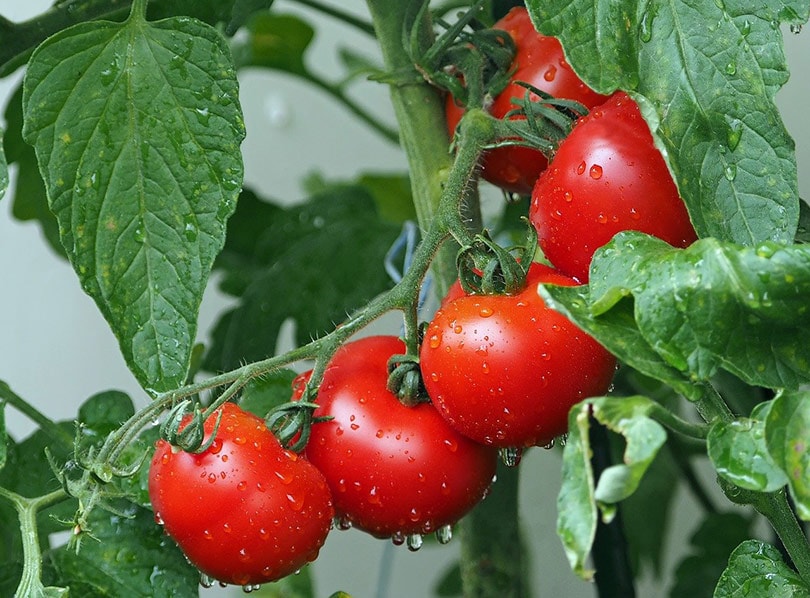
Tomatoes need very particular conditions to thrive and while these vegetables are beneficial to grow, they can be hard to maintain. If you are looking for ways to increase your tomato yield and improve the quality of your plants and soil, try using mulch on your plants.
There are many types of mulch you can use, and we will include the best types in the list below.

The 9 Great Mulch Options for Tomatoes
1. Grass Clippings
Grass clippings are an excellent mulch for tomatoes because of the high nitrogen that has amazing effects on the plant. Grass clippings are also excellent at suppressing weeds, bringing amazing results to tomatoes. This mulch will increase the soil’s moisture, providing this vegetable with perfect conditions for healthy growth.
When using grass clippings as mulch, it is important not to overdo it, as too much nitrogen in the soil can result in the foliage developing without fruit. That is why it is necessary to switch to a different mulch type right after your tomatoes produce their first cluster of fruits. Lay the grass clippings as mulch around your tomato plants. The mulch should be around 4 inches thick, with free space between the stem and the grass.
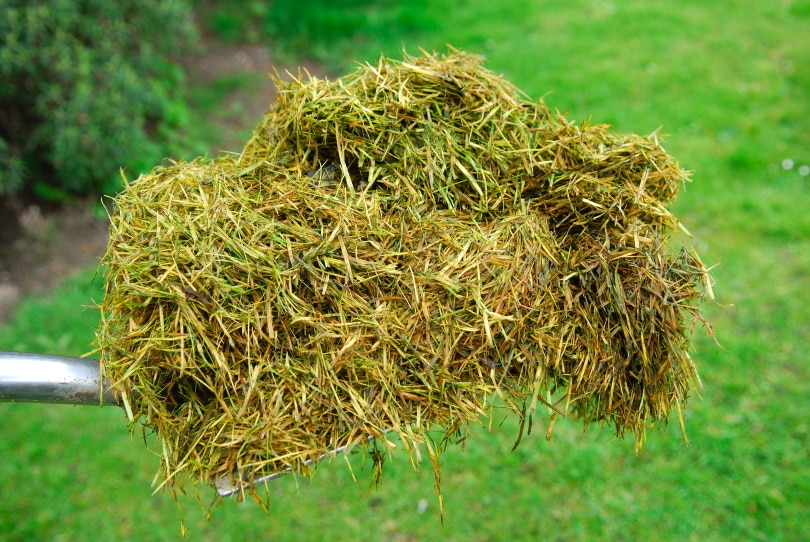
2. Bark Chips
The most attractive mulch and one that many gardeners love is bark chips. One excellent feature that bark chips have is it takes a long time for them to break down, saving you a lot of time and energy when gardening. One downside of this mulch is that once it starts breaking down, it tends to change the composition of your soil. Check the pH levels frequently and add a nitrogen-rich fertilizer when needed.
Using bark chips is very simple and requires only spreading them around the base of your tomato plant in a 2 to 3-inch layer. Since chip bark breaks down much slower than other types of mulch, you will only need to re-apply in the following season.
3. Straw
Straw is another excellent choice for tomato mulch because it is affordable and easily available. Golden straw and wheat straw are the safest choices for tomatoes because they don’t contain any weed seeds, unlike feed hay. Straw is very beneficial to tomatoes because it retains moisture in the soil and increases the yield. It is also much less dirty and messier, making it simple and effective.
It is important not to let the straw touch the plant’s stems or leaves, as this can cause fungal infections or bacteria to develop on the plant.
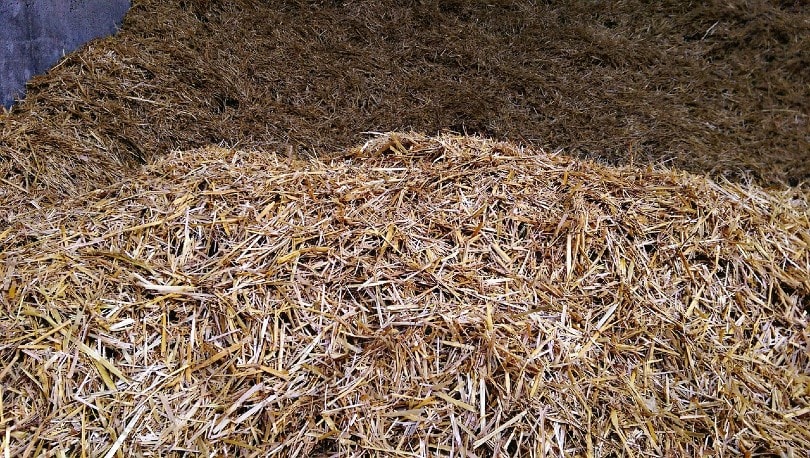
4. Pine Needles
While it seems odd, pine needles actually provide many valuable nutrients to tomatoes when used as mulch. They break down much slower than grass clipping, making them quite efficient. While pine needles tend to make the soil slightly acidic, this won’t harm your tomato plants because it is only temporary. As the pine needles decay, they will stop being acidic and only provide beneficial nutrients to the soil.
needles bring the best result when paired with other mulches such as cardboard, wood chips, or grass clippings.
5. Newspaper and Cardboard
Cardboard and newspaper are excellent mulches for suppressing weeds. They also provide the soil with air and moisture, which is what tomatoes need most, and are affordable and easy to obtain. While newspaper and cardboard are excellent as tomato mulch, they have several drawbacks that need to be mentioned. Newspaper can be dangerous for soil mulch as some newspapers contain harmful chemicals. Cardboard is much safer to use than a newspaper for this particular reason.
Layer the cardboard around the base of the plant in a 2 to 5-inch layer. This mulch is best when paired with organic mulch to add beneficial nutrients to the soil.
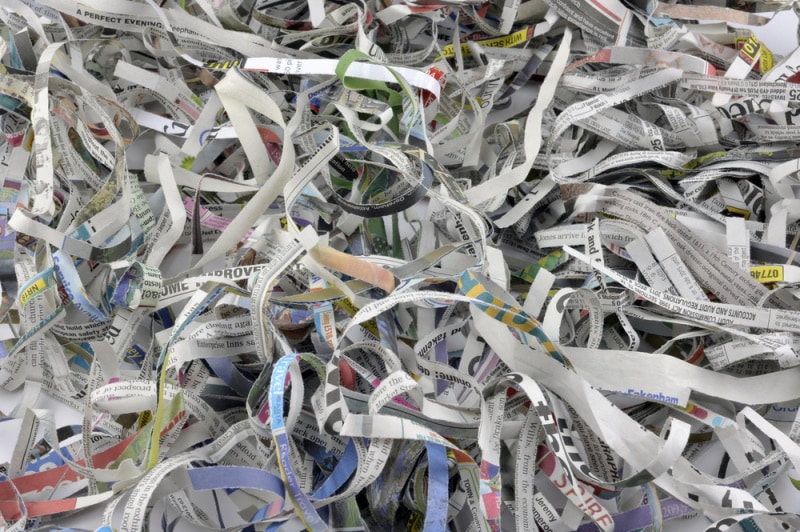
6. Shredded Leaves
Shredded leaves are another example of excellent mulch for tomatoes. As they break down, they improve the overall health and quality of the soil. When using leaves for mulch, it is crucial to shred them first, as whole leaves can significantly damage your tomatoes. Shredded leaves are incredibly easy to acquire from your garden and don’t require any investments to be used as mulch, which is why many gardeners love this method.
The layer of shredded leaves needs to be thin, as shredded leaves can trap moisture and cause rotting.
7. Peat Moss
Adding peat moss to your soil is another fantastic method for mulching. As peat moss decomposes, it brings some valuable nutrients to the soil while retaining its moisture. While peat moss is excellent at retaining moisture, it also tends to leach it from your plants. That is why it is recommended to water your plants deeply and thoroughly before applying peat moss on the surface. Many gardeners like to use peat moss as a top addition to other types of mulch, as it provides an attractive and neat-looking garden.
Ensure the mulch doesn’t touch the tomato’s stems or leaves to prevent any pathogens from developing. Make sure to water the soil before applying peat moss.
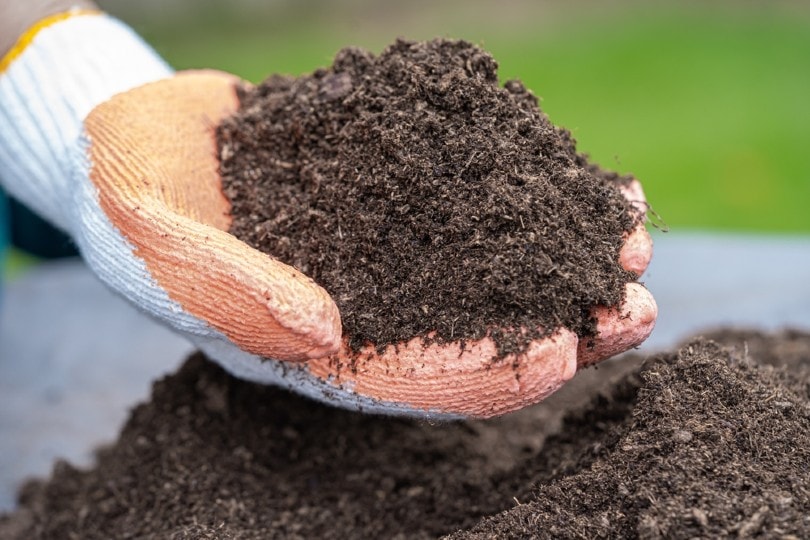
8. Mulch Film
Mulch film is a useful mulch option for tomatoes, and the Dalen Better Reds is amazing for increasing the yield of your plants. This mulch helps the soil retain moisture and keeps it cool throughout the summer. The red film stimulates the early growth of tomatoes and is a breeze to apply.
That said, some gardeners have pointed out that after heavy rain, there is a risk of fungus developing on the leaves due to splashing.
9. Cedar Shavings
Natural Cedar shavings are another excellent mulch for growing tomatoes. It is excellent at retaining moisture and can be used for indoor and outdoor plants and even hanging planters. It smells fresh and can even be used as animal bedding, plus is a natural bug repellant.
Of course, this mulch can be a bit messier than other options listed above and can be challenging to apply evenly if you have a large number of tomato plants that needs mulching.

Conclusion
Mulch is meant to improve the soil’s quality, keep it cool during warm days, and retain moisture. You can choose between using natural mulch you can find in your garden and some products that will help speed up the process. After reading about the best mulch options for tomatoes, your plants will thrive and be healthier than ever.
Featured Image Credit: kie-ker, Pixabay
Contents
